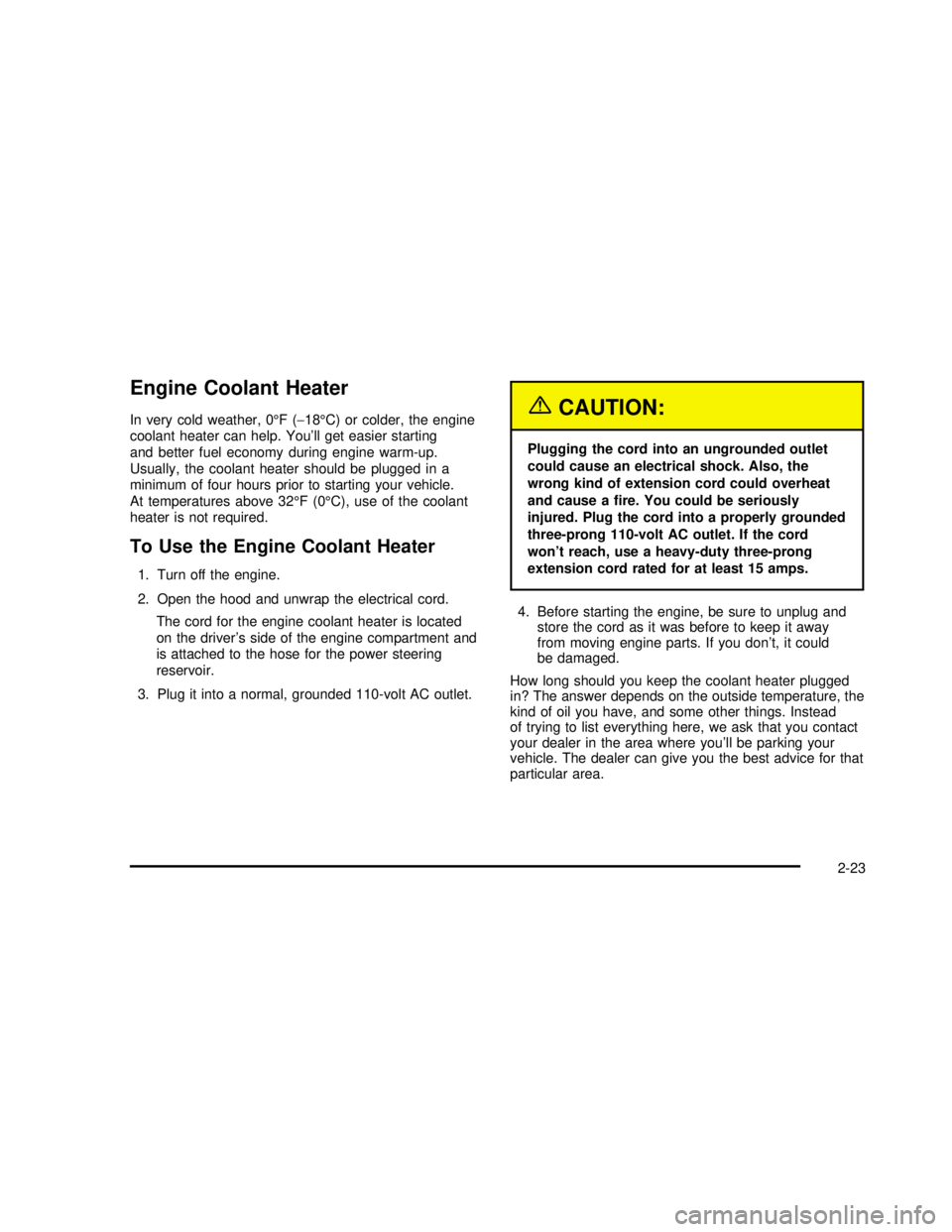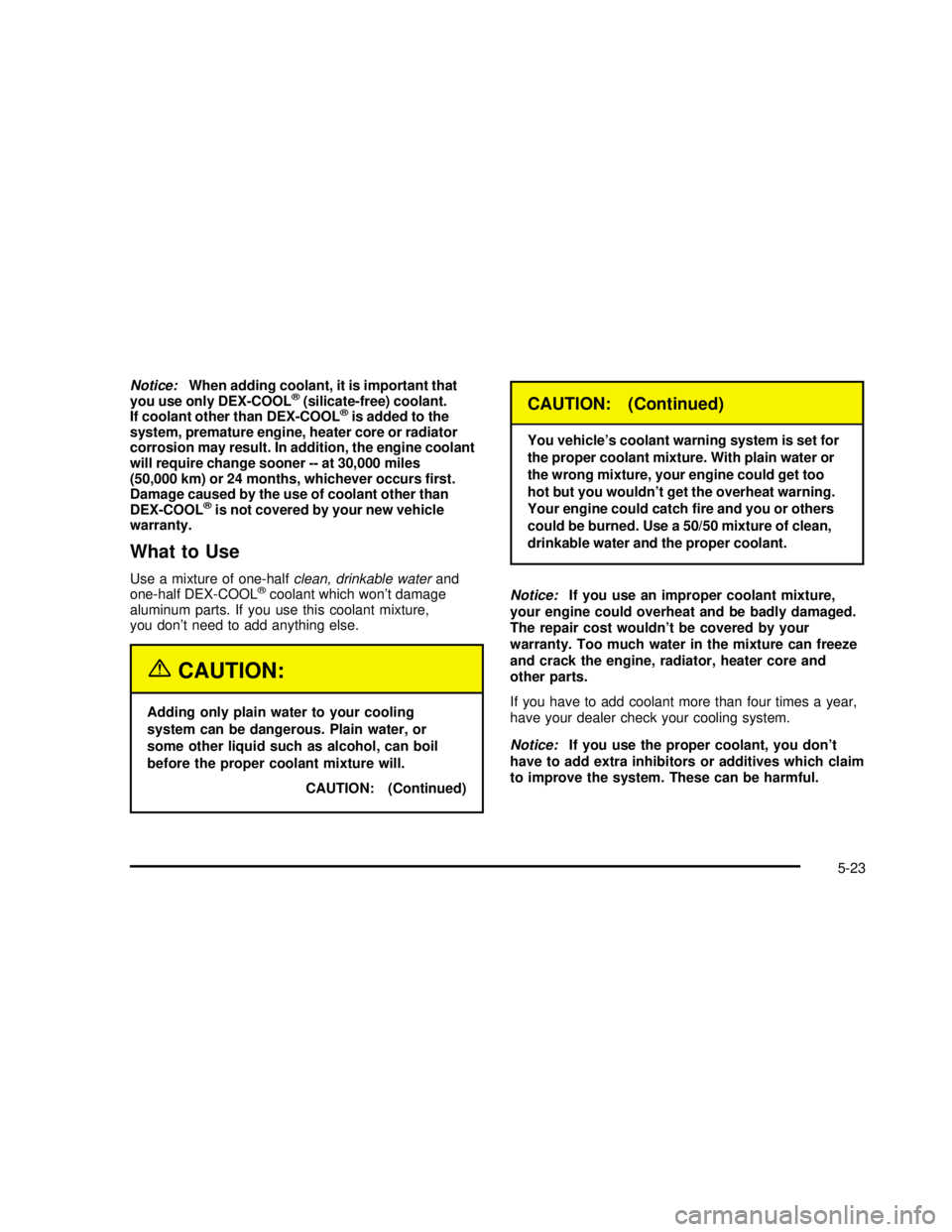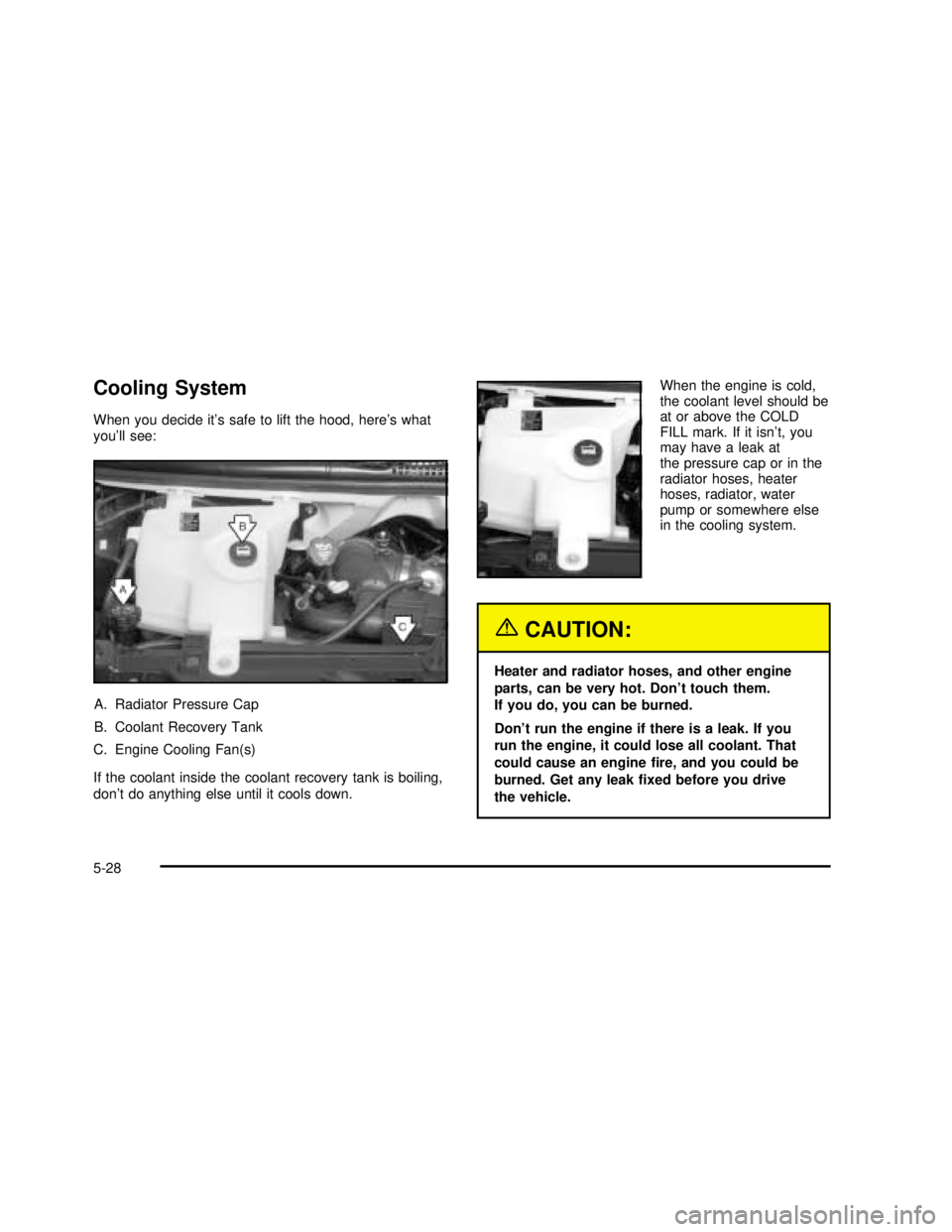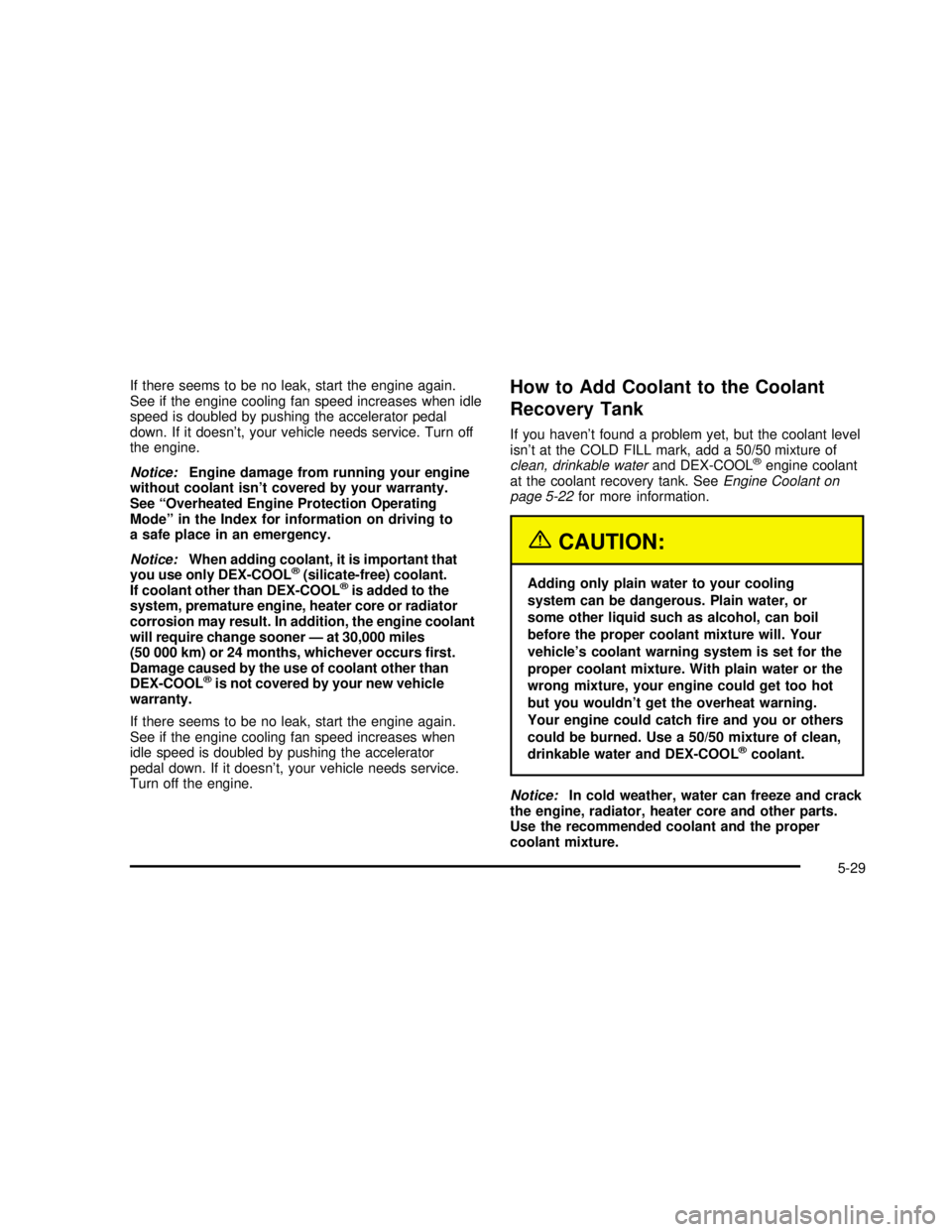heater GMC SAVANA 2003 Owner's Manual
[x] Cancel search | Manufacturer: GMC, Model Year: 2003, Model line: SAVANA, Model: GMC SAVANA 2003Pages: 392, PDF Size: 2.34 MB
Page 83 of 392

Keys...............................................................2-2
Remote Keyless Entry System.........................2-4
Remote Keyless Entry System Operation...........2-5
Doors and Locks.............................................2-8
Door Locks....................................................2-8
Power Door Locks..........................................2-9
Cargo Door Relocking.....................................2-9
Rear Door Security Locks..............................2-10
Lockout Protection........................................2-11
Leaving Your Vehicle....................................2-11
Sliding Side Door..........................................2-11
60/40 Swing-Out Side Door............................2-13
Rear Doors..................................................2-15
Windows........................................................2-16
Manual Windows..........................................2-17
Power Windows............................................2-17
Swing-Out Windows......................................2-18
Sun Visors...................................................2-19
Theft-Deterrent Systems..................................2-19
Passlock
®....................................................2-20Starting and Operating Your Vehicle................2-20
New Vehicle Break-In....................................2-20
Ignition Positions..........................................2-21
Starting Your Engine.....................................2-22
Engine Coolant Heater..................................2-23
Automatic Transmission Operation...................2-24
All-Wheel Drive............................................2-26
Parking Brake..............................................2-26
Shifting Into Park (P).....................................2-27
Shifting Out of Park (P).................................2-29
Parking Over Things That Burn.......................2-30
Engine Exhaust............................................2-30
Running Your Engine While You Are Parked.......2-31
Mirrors...........................................................2-32
Manual Rearview Mirror.................................2-32
Outside Manual Mirror...................................2-32
Outside Remote Control Mirror.......................2-32
Outside Camper-Type Mirrors.........................2-33
Outside Power Mirrors...................................2-34
Outside Convex Mirror...................................2-34
Outside Heated Mirrors..................................2-35
OnStar
®System.............................................2-35
Storage Areas................................................2-36
Section 2 Features and Controls
2-1
2003 - Savana OM
Page 105 of 392

Engine Coolant Heater
In very cold weather, 0°F(−18°C) or colder, the engine
coolant heater can help. You’ll get easier starting
and better fuel economy during engine warm-up.
Usually, the coolant heater should be plugged in a
minimum of four hours prior to starting your vehicle.
At temperatures above 32°F(0°C), use of the coolant
heater is not required.
To Use the Engine Coolant Heater
1. Turn off the engine.
2. Open the hood and unwrap the electrical cord.
The cord for the engine coolant heater is located
on the driver’s side of the engine compartment and
is attached to the hose for the power steering
reservoir.
3. Plug it into a normal, grounded 110-volt AC outlet.
{CAUTION:
Plugging the cord into an ungrounded outlet
could cause an electrical shock. Also, the
wrong kind of extension cord could overheat
and cause afire. You could be seriously
injured. Plug the cord into a properly grounded
three-prong 110-volt AC outlet. If the cord
won’t reach, use a heavy-duty three-prong
extension cord rated for at least 15 amps.
4. Before starting the engine, be sure to unplug and
store the cord as it was before to keep it away
from moving engine parts. If you don’t, it could
be damaged.
How long should you keep the coolant heater plugged
in? The answer depends on the outside temperature, the
kind of oil you have, and some other things. Instead
of trying to list everything here, we ask that you contact
your dealer in the area where you’ll be parking your
vehicle. The dealer can give you the best advice for that
particular area.
2-23
2003 - Savana OM
Page 221 of 392

{CAUTION:
Snow can trap exhaust gases under your
vehicle. This can cause deadly CO (carbon
monoxide) gas to get inside. CO could
overcome you and kill you. You can’t see it or
smell it, so you might not know it is in your
vehicle. Clear away snow from around the
base of your vehicle, especially any that is
blocking your exhaust pipe. And check around
again from time to time to be sure snow
doesn’t collect there.
Open a window just a little on the side of the
vehicle that’s away from the wind. This will
help keep CO out.Run your engine only as long as you must. This saves
fuel. When you run the engine, make it go a little
faster than just idle. That is, push the accelerator
slightly. This uses less fuel for the heat that you get and
it keeps the battery (or batteries) charged. You will
need a well-charged battery (or batteries) to restart the
vehicle, and possibly for signaling later on with your
headlamps. Let the heater run for a while.
Then, shut the engine off and close the window almost
all the way to preserve the heat. Start the engine
again and repeat this only when you feel really
uncomfortable from the cold. But do it as little as
possible. Preserve the fuel as long as you can.
To help keep warm, you can get out of the vehicle
and do some fairly vigorous exercises every half hour
or so until help comes.
4-27
2003 - Savana OM
Page 263 of 392

Notice:When adding coolant, it is important that
you use only DEX-COOL®(silicate-free) coolant.
If coolant other than DEX-COOL®is added to the
system, premature engine, heater core or radiator
corrosion may result. In addition, the engine coolant
will require change sooner -- at 30,000 miles
(50,000 km) or 24 months, whichever occursfirst.
Damage caused by the use of coolant other than
DEX-COOL
®is not covered by your new vehicle
warranty.
What to Use
Use a mixture of one-halfclean, drinkable waterand
one-half DEX-COOL®coolant which won’t damage
aluminum parts. If you use this coolant mixture,
you don’t need to add anything else.
{CAUTION:
Adding only plain water to your cooling
system can be dangerous. Plain water, or
some other liquid such as alcohol, can boil
before the proper coolant mixture will.
CAUTION: (Continued)
CAUTION: (Continued)
You vehicle’s coolant warning system is set for
the proper coolant mixture. With plain water or
the wrong mixture, your engine could get too
hot but you wouldn’t get the overheat warning.
Your engine could catchfire and you or others
could be burned. Use a 50/50 mixture of clean,
drinkable water and the proper coolant.
Notice:If you use an improper coolant mixture,
your engine could overheat and be badly damaged.
The repair cost wouldn’t be covered by your
warranty. Too much water in the mixture can freeze
and crack the engine, radiator, heater core and
other parts.
If you have to add coolant more than four times a year,
have your dealer check your cooling system.
Notice:If you use the proper coolant, you don’t
have to add extra inhibitors or additives which claim
to improve the system. These can be harmful.
5-23
2003 - Savana OM
Page 267 of 392

Notice:If your engine catchesfire because you keep
driving with no coolant, your vehicle can be badly
damaged. The costly repairs would not be covered by
your warranty. See“Overheated Engine Protection
Operating Mode”in the Index for information on
driving to a safe place in an emergency.
If No Steam Is Coming From Your
Engine
If you get an engine overheat warning but see or
hear no steam, the problem may not be too serious.
Sometimes the engine can get a little too hot when you:
•Climb a long hill on a hot day.
•Stop after high-speed driving.
•Idle for long periods in traffic.
•Tow a trailer. See“Driving on Grades”inTowing a
Trailer on page 4-31.If you get the overheat warning with no sign of steam,
try this for a minute or so:
1. In heavy traffic, let the engine idle in NEUTRAL(N)
while stopped. If it is safe to do so, pull off the road,
shift to PARK (P) or NEUTRAL(N) and let the
engine idle.
2. Turn on your heater to full hot at the highest fan
speed and open the window as necessary.
If you no longer have the overheat warning, you can
drive. Just to be safe, drive slower for about 10 minutes.
If the warning doesn’t come back on, you can drive
normally.
If the warning continues, and you have not stopped,
pull over, stop, and park your vehicle right away.
If there’s still no sign of steam, push down the
accelerator until the engine speed is about twice as fast
as normal idle speed for at least three minutes while
you’re parked. If you still have the warning,turn off the
engine and get everyone out of the vehicleuntil it
cools down.
You may decide not to lift the hood but to get service
help right away.
5-27
2003 - Savana OM
Page 268 of 392

Cooling System
When you decide it’s safe to lift the hood, here’s what
you’ll see:
A. Radiator Pressure Cap
B. Coolant Recovery Tank
C. Engine Cooling Fan(s)
If the coolant inside the coolant recovery tank is boiling,
don’t do anything else until it cools down.When the engine is cold,
the coolant level should be
at or above the COLD
FILL mark. If it isn’t, you
may have a leak at
the pressure cap or in the
radiator hoses, heater
hoses, radiator, water
pump or somewhere else
in the cooling system.
{CAUTION:
Heater and radiator hoses, and other engine
parts, can be very hot. Don’t touch them.
If you do, you can be burned.
Don’t run the engine if there is a leak. If you
run the engine, it could lose all coolant. That
could cause an enginefire, and you could be
burned. Get any leakfixed before you drive
the vehicle.
5-28
2003 - Savana OM
Page 269 of 392

If there seems to be no leak, start the engine again.
See if the engine cooling fan speed increases when idle
speed is doubled by pushing the accelerator pedal
down. If it doesn’t, your vehicle needs service. Turn off
the engine.
Notice:Engine damage from running your engine
without coolant isn’t covered by your warranty.
See“Overheated Engine Protection Operating
Mode”in the Index for information on driving to
a safe place in an emergency.
Notice:When adding coolant, it is important that
you use only DEX-COOL
®(silicate-free) coolant.
If coolant other than DEX-COOL®is added to the
system, premature engine, heater core or radiator
corrosion may result. In addition, the engine coolant
will require change sooner—at 30,000 miles
(50 000 km) or 24 months, whichever occursfirst.
Damage caused by the use of coolant other than
DEX-COOL
®is not covered by your new vehicle
warranty.
If there seems to be no leak, start the engine again.
See if the engine cooling fan speed increases when
idle speed is doubled by pushing the accelerator
pedal down. If it doesn’t, your vehicle needs service.
Turn off the engine.
How to Add Coolant to the Coolant
Recovery Tank
If you haven’t found a problem yet, but the coolant level
isn’t at the COLD FILL mark, add a 50/50 mixture of
clean, drinkable waterand DEX-COOL
®engine coolant
at the coolant recovery tank. SeeEngine Coolant on
page 5-22for more information.
{CAUTION:
Adding only plain water to your cooling
system can be dangerous. Plain water, or
some other liquid such as alcohol, can boil
before the proper coolant mixture will. Your
vehicle’s coolant warning system is set for the
proper coolant mixture. With plain water or the
wrong mixture, your engine could get too hot
but you wouldn’t get the overheat warning.
Your engine could catchfire and you or others
could be burned. Use a 50/50 mixture of clean,
drinkable water and DEX-COOL
®coolant.
Notice:In cold weather, water can freeze and crack
the engine, radiator, heater core and other parts.
Use the recommended coolant and the proper
coolant mixture.
5-29
2003 - Savana OM
Page 338 of 392

Capacities
ApplicationCapacities
QTY Without
Rear HeaterQTY With
Rear Heater
Cooling System
After refill, the level must be rechecked. See“Cooling System”in the Index.
VORTEC™4300 V6 11.0 quarts (10.4 L) 14.0 quarts (13.2 L)
VORTEC™4800 V8 13.4 quarts (12.7 L) 16.4 quarts (15.5 L)
VORTEC™5300 V8 13.4 quarts (12.7 L) 16.4 quarts (15.5 L)
VORTEC™6000 V8 14.8 quarts (14.0 L) 17.8 quarts (17.0 L)
ApplicationCapacities
English Metric
Engine Oil With Filter
After refill, the level must be rechecked. Add enough engine oil so that thefluid is within the proper operating
range. SeeEngine Oil on page 5-13
VORTEC™4300 V6 (Vin W) 4.5 quarts 4.3 L
VORTEC™4800 V8 ( Vin V) 6.0 quarts 5.7 L
VORTEC™5300 V8 (Vin T) 6.0 quarts 5.7 L
VORTEC™6000 V8 (Vin U) 6.0 quarts 5.7 L
5-98
2003 - Savana OM
Page 339 of 392

ApplicationCapacities
QTY Without
Rear HeaterQTY With
Rear Heater
Fuel Tank
Standard Tank (Passenger and Cargo) 31.0 gallons 117.3 L
Standard Tank (Cab and Chassis) 35.0 gallons 132.5 L
Optional Tank* (Cab and Chassis) 55.0 gallons 208.1 L
* 159 inch wheelbase or 177 inch wheel base only
Air Conditioning Refrigerant Capacity
Air Conditioning Refrigerant R-134a (Front) 1.8 lbs (0.81 kg)
Air Conditioning Refrigerant R-134a (Front and Rear) 3.1 lbs (1.41 kg)
5-99
2003 - Savana OM
Page 378 of 392

Chime Level Adjustment..................................3-76
Cigarette Lighter.............................................3-16
Cleaning
Inside of Your Vehicle..................................5-82
Outside of Your Vehicle................................5-85
Underbody Maintenance...............................5-88
Weatherstrips..............................................5-85
Cleaning Exterior Lamps/Lenses.......................5-86
Climate Control System...................................3-17
Rear Air Conditioning and Heating System......3-19
Rear Heating System...................................3-18
Compact Disc Messages.................3-48, 3-59, 3-71
Control of a Vehicle.......................................... 4-6
Coolant
Engine Temperature Gage............................3-32
Heater, Engine............................................2-23
Low Warning Light.......................................3-33
Cooling System..............................................5-28
Cruise Control.................................................. 3-9
Cruise Control Light........................................3-38
Current and Past Model Order Forms................7-11
Customer Assistance Information
Courtesy Transportation.................................. 7-7
Customer Assistance for Text
Telephone (TTY) Users............................... 7-4
Customer Assistance Offices........................... 7-4
Customer Satisfaction Procedure..................... 7-2Customer Assistance Information (cont.)
GM Mobility Program for Persons with
Disabilities................................................ 7-5
Reporting Safety Defects to General Motors....7-10
Reporting Safety Defects to the Canadian
Government............................................7-10
Reporting Safety Defects to the United States
Government.............................................. 7-9
Roadside Assistance Program......................... 7-6
Service Publications Ordering Information........7-10
D
Daytime Running Lamps..................................3-13
Daytime Running Lamps Indicator Light.............3-39
Defensive Driving............................................. 4-2
Defogging and Defrosting.................................3-21
Directing the Airflow ........................................3-20
Doing Your Own Service Work........................... 5-3
Dome Lamp Override......................................3-14
Dome Lamps .................................................3-15
Door
60/40 Swing-Out Side Door...........................2-13
Cargo Door Relocking.................................... 2-9
Locks.......................................................... 2-8
Power Door Locks......................................... 2-9
4
2003 - Savana OM